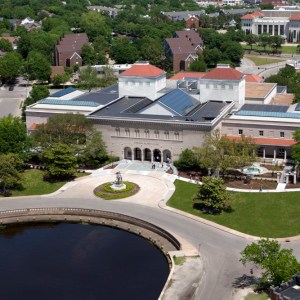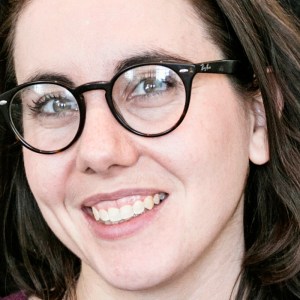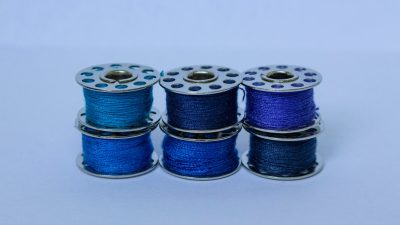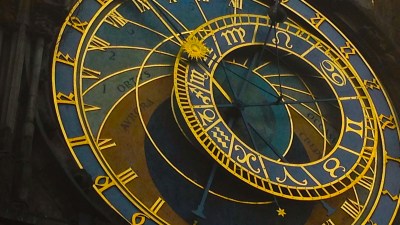
When I posted our call for internship applications last December, I had a very different idea of what the summer would look like. A typical internship at the Chrysler Museum of Art involves current students or recent graduates gaining in-depth experience in a particular department, paired with broader experiences like information sessions with staff from other departments and field trips to other area museums. But as the pandemic hit, myself and colleagues around the world found ourselves exercising the key skill in museum work—flexibility—and quickly adapting internship programs for a remote work environment.
At first, given the backdrop of tremendous uncertainty, there was some debate as to whether to proceed with the internships at all, and it seems that many other institutions were having similar conversations. The Museum Studies Network of AAM compiled an extensive resource for students listing remote opportunities, and it became clear that museums wanted to offer educational experiences. On one hand, we wanted to provide valuable learning experiences for future museum professionals, but on the other, we did not want to commit to something we could not do well. It took a leap of faith in ourselves and our potential interns to move forward.
While planning to switch our program from in-person to remote, the priority was maintaining the integrity and purpose of an internship experience—hands-on professional work and mentorship for students interested in the museum field. To ensure that, we placed each intern with a primary mentor, as usual, who served as their point of contact and helped facilitate their time at the museum.
In the end, we were able to host six interns in the education, curatorial, human resources, and director’s offices. Additionally, two fellows from ArtTable and the Association of Art Museum Directors filled out our fabulous cohort. Despite our fears, it turned out to be a rewarding summer all around, and the benefits we saw suggest virtual internships may well be with us after the pandemic too. Here is some of what we learned along the way.

Structured communication is key.
Skip over related stories to continue reading articleWith remote experiences especially, communication is essential, and the best way to keep it flowing is to structure it.
To connect the interns to each other, we had them check in as a group in a weekly meeting. We learned what projects everyone was working on and bonded over discussions of current issues. Michelle Zillioux, an intern in the education department, noted, “At first I was worried about completing an internship virtually. By the end of the first week, I knew I had worried for nothing. The camaraderie and engagement of the Chrysler Museum staff is above and beyond anything I have ever experienced in a work environment. Even through my computer screen during weekly meetings, I felt as though I was connecting the museum staff and my fellow interns in important ways.”
To connect the interns and their supervisors, we set clear expectations at the beginning that it was the responsibility of both parties to communicate. In my experience, interns can often be intimidated in communicating with their supervisor, either fearful of seeming unprepared or wary of interrupting the other work their mentor is doing. I wanted to start from the beginning with the idea that questions are encouraged and mentors will not be bothered with communication. It can be intimidating to jump into the middle of a bustling work environment, especially when it is virtual, and we hoped to alleviate these fears and worries. We also made sure the interns understood our existing communications systems—including Slack, email, Trello, and the now-ubiquitous Zoom—and how their supervisors and the rest of the staff use them.
Finally, we required the interns to fill out a quick Google Forms survey at the end of each week, a space for reporting and feedback that was especially important in the virtual environment. Without the ability to pop into someone’s workspace for a chat, you need another way to ensure the interns are feeling productive and positive about their work. This method had benefits for both parties. In my case, it allowed me to track hours and spot any potential problems before they developed. For the interns, it encouraged them to think critically about their successes and challenges, helped them realize when they needed to ask for help, and reminded them to celebrate accomplishments that can be harder to notice in the virtual world.
Meaningful projects are still possible, with some adjustments.
Despite the interns being mostly off-site (some were able to come to the museum on occasion as restrictions in Virginia lifted), they were still able to contribute meaningful projects to the museum. Research and writing-based tasks were best suited to remote work. Even outreach to local artists and community groups was accessible to our interns by email. While some departments are not necessarily as conducive to remote work, many were able to adapt their originally intended projects, and tailor them to the strengths and interests of the individual interns. Some of the projects our interns completed included researching and writing proposals, producing content for teacher resources, and researching potential acquisitions to expand underrepresented areas in our collection.
Avery Bolden, our AAMD Fellow, was tasked with the ambitious project of scouring our encyclopedic collection of over thirty thousand objects and proposing pairings (or “Double Takes”) that would expand the conversation on each. For example, one extremely poignant pairing will place Peter Paul Rubens’ portrait Archduchess Isabella Clara Eugenia (ca. 1616) in conversation with Willie Cole’s Untitled scorch from 1991. Both works look at the connection of textiles to culture, but more importantly, they show two sides of the realities of the seventeenth-century slave trade. Avery was able to orchestrate virtual meetings with curators and educators and work with the online collections database to complete a number of strong proposals with minimal time spent in the museum.
For the education department, Michelle Zillioux created a resource for teachers on how to use art to talk about difficult subjects, working from an extensive list of works. The “Let’s Talk About It” guide will be a starting point for teachers who want to talk about race, gender, poverty, ability, and other dimensions of identity and social issues in their classrooms. Michelle was able to curate thoughtful lists with talking points and context to aid in facilitating these important discussions. Again, research and writing were skills that could be exercised in creating meaningful contributions in the virtual field.
Virtual meetings pose some challenges.
While the overall experience was successful, challenges were inevitable with such a rapid shift. For one, Zoom fatigue is real, and the interns spent a lot of time in virtual meetings. These meetings provided valuable introductions to other museum staff and projects, but they could still be tiring. Also, with schedules that changed each week, ensuring that everyone was on the same page about meetings and deadlines required both weekly email reminders as well as calendar invitations. To improve in the future, I would include additional frontloading of expectations and scheduling.
Another challenge, which some interns felt more than others, was not feeling fully enveloped in the museum team. Through the meetings they participated in together, the interns said they felt connected to each other (or as much as possible during a pandemic), but completing an internship without setting foot in the building can be disorienting. The weekly information sessions with each department helped offset this, giving them not only opportunities to learn about various museum careers, but also to have intimate and informal virtual conversation with staff.
Discussing changes in the field helps interns place themselves in it.
During our intern meetings, we discussed the museum field at large, the challenges faced by institutions, and what museums should aspire to in term of equity and inclusion. The interns were encouraged to read articles reflecting on these challenges, including:
- “Black Artists and Gallerists on What a More Inclusive Art World Would Look Like” by Taylor Crumpton
- “On the Limits of Care and Knowledge: 15 Points Museums Must Understand to Dismantle Structural Injustice” by Yesomi Umolu
- Excerpts from The Art of Relevance by Nina Simon
Through these readings, the cohort were able to think about the history of museums, the communities museums aim to reach, and what the future might entail. Although the experience of becoming intimately aware of the practices and workings of a museum like the Chrysler is significant on its own, it is also important for their professional development to think about larger issues in the field that many museums are facing.
Understanding the reality of museums, their history and present, is essential for beginning a career in the field, and our interns demonstrated potential and hope for our profession through our future colleagues. Michelle Mandarino, the ArtTable Curatorial Fellow whose work included advocating for the acquisition of work by Latinx artists, stated, “While I think it is very easy to become discouraged, hopeless, or worse, even complacent in the face of structural injustice, I also think there is space for hope. While I am still very much in the beginning of my museum career, experiences such as this fellowship have given me the opportunity not only to connect myself with like-minded professionals in the curatorial field but also to promote change in the small ways that I can.”
Virtual internships could be the future, with benefits to our field.
It is easy to think that remote experiences are temporary, an adaptation confined to the coronavirus pandemic. But the reality is that they will most likely be a more permanent part of our future. Many museums begin planning for their summer internships in the fall, posting opportunities for applicants in the winter. Time is running out to consider what next summer could look like. Will virtual internships become more popular? They offer distinct advantages in that they let interns create their own schedules (to an extent) to work around other obligations, and remove the location barrier to allow participants to seek experiences from other parts of the country or world. For instance, Michelle Mandarino, quoted above, was based in Indiana for the entire summer, while we were in Virginia.
Access to internships has many barriers, a component of the structural issues that persist in museums. Many opportunities are unpaid. Relocation for a short-term position can be impractical. The pandemic has forced us to acknowledge systemic issues in our society that have persisted for a long time, and museums are not exempt. This offers us the opportunity to reevaluate what early-stage career development looks like. Internships remain an almost required step to gaining even entry-level employment, yet they remain largely inaccessible to those without financial security. Paid remote internships could be a step towards achieving diversity and equity in our field.
While this summer is over, next summer is just around the corner, and planning must begin for a new wave of internships. What were your institution’s experiences? How are you preparing for the future during these unprecedented times? Let’s open the conversation on internships and opportunities in the time of COVID.









Hi. Is there any way to keep this post more visibly afloat? The extensive resource list (for interns) shows that only five museums responded, all with internship deadlines in early September. The internship issue is going to be ongoing.
Thank you.